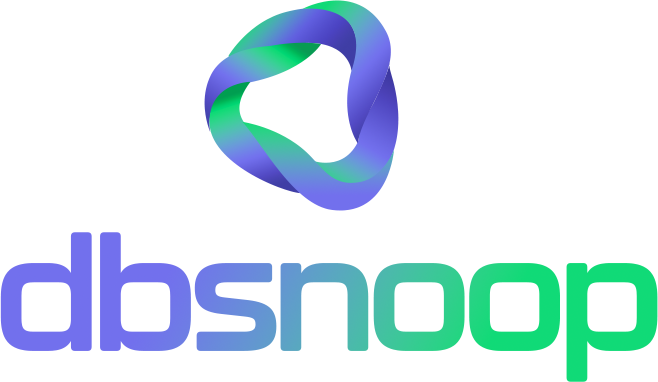

Observability is often seen as a tool exclusively for DevOps, DBAs, and SRE engineers. The main goal seems to be technical: ensuring that infrastructure and applications run stably. However, this view is limited. Modern observability, driven by AI and detailed telemetry, is a strategic asset that can and should be used by Product teams to make smarter, data-driven decisions.
By connecting what happens at the technical level with user behavior and business outcomes, observability becomes the bridge between engineering and product. It answers critical questions that go far beyond system health, offering valuable insights into user experience, the performance of new features, and the financial impact of every database query.
This article explores how Product teams can use observability to move beyond intuition and adopt a data-driven approach to optimize their product and drive growth.
The Missing Link: From Technical Problem to Business Impact
For a Product Manager (PM), a reported bug might be a problem, but a slow query is a technical abstraction. Observability bridges this gap by translating system metrics into information that is relevant to the business.
Common scenario:
- DevOps alert: “The database server’s CPU is high.”
- PM wonders: “So what? Does this affect the user? Which feature is this related to? How much is this costing us?”
Scenario with strategic observability (and dbsnOOp):
- Observability Platform: “The database server’s CPU increased by 30% after the new ‘Customer Filter’ feature was deployed. The AI identified that the query for searching by tags in the filter is experiencing a performance regression and increasing user wait time by 2 seconds, impacting lead conversion.”
This is the crucial difference. Observability contextualizes the problem, linking the technical metric to the business workflow, the user experience, and the bottom line.

Four Ways Product Teams Can Use Observability
With access to the right data, Product teams can transform their decision-making routine.
1. Validate New Feature Performance Every new feature is a gamble. Will it deliver the expected value without compromising system performance? Observability allows the Product team to monitor the health of the new feature in real-time. It’s possible to answer questions like:
- Did the new file upload feature deployment generate a significant increase in disk I/O?
- Is the new query for the reports dashboard consuming a disproportionate amount of resources?
- Did the latency for users in Europe increase after the new feature was launched?
With these answers in hand, the team can quickly decide whether they need to optimize, turn off, or roll back the feature, minimizing negative impact.
2. Understand Real User Experience (RUM) Real User Monitoring (RUM) is an extension of observability that focuses on the user experience. It’s more than knowing if the page loaded; it’s understanding how it loaded for each user. Observability helps the PM correlate the slowness of a query with a drop in engagement in a product section, or high latency with an increase in form abandonment rates.
- Practical example: Observability can show that the new search filter, while functional, is slow for users with many permissions. The PM can then decide to prioritize optimizing this filter or create a lighter version for that group of users.
3. Optimize Costs and Decide the Product Roadmap The cloud brings the flexibility of usage-based billing, but also the complexity of FinOps. Observability transforms technical metrics into financial impact, allowing the Product team to prioritize what truly matters.
- Practical example: An inefficient query is costing R$500.00 per month in unnecessary CPU resources in the cloud. The Product team can compare this cost with the value the query generates for the user and decide if it’s more advantageous to optimize it or dedicate engineering time to another, more valuable feature.
4. Troubleshoot Perception The customer support team reports that users are complaining about slowness in a feature. The DevOps team looks at the dashboards and says, “Everything’s fine here.” Observability resolves this conflict. Instead of arguing about who is right, the PM can use the platform to analyze the data in real-time, identify the query causing the intermittent slowness, and collaborate with engineering on a definitive solution. Observability is not based on assumptions, but on facts.
dbsnOOp: The Tool for the Strategic PM
dbsnOOp was built to give product teams the visibility they’ve never had. Our platform is not limited to technical metrics; it offers a complete overview, translating what happens in your database into information that guides product strategy.
- End-to-End Vision: We connect the performance of each query with the application’s behavior and, by extension, with the user experience.
- Financial Impact: We show the real cost of each inefficient query, allowing the PM to prioritize optimizations that generate savings in the cloud.
- Actionable Data: dbsnOOp’s AI doesn’t just point out a problem; it suggests the solution. With this, the PM can make decisions based on concrete data, accelerating product development and optimization.
The future of product development is data-driven. And observability is the richest and most reliable source of that data.
Want to connect your database performance with your product strategy? Schedule a meeting with our specialist or watch a practical demonstration!
Schedule a demo here.
Learn more about dbsnOOp!
Learn about database monitoring with advanced tools here.
Visit our YouTube channel to learn about the platform and watch tutorials.


